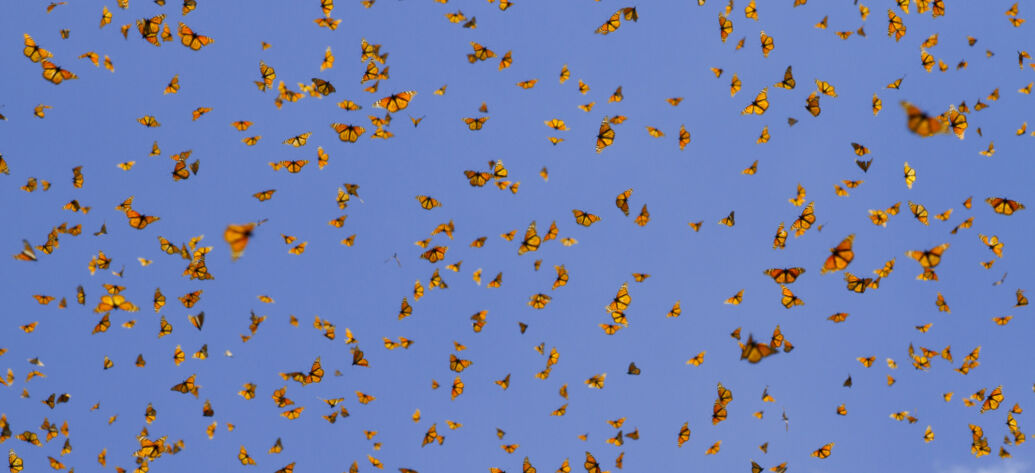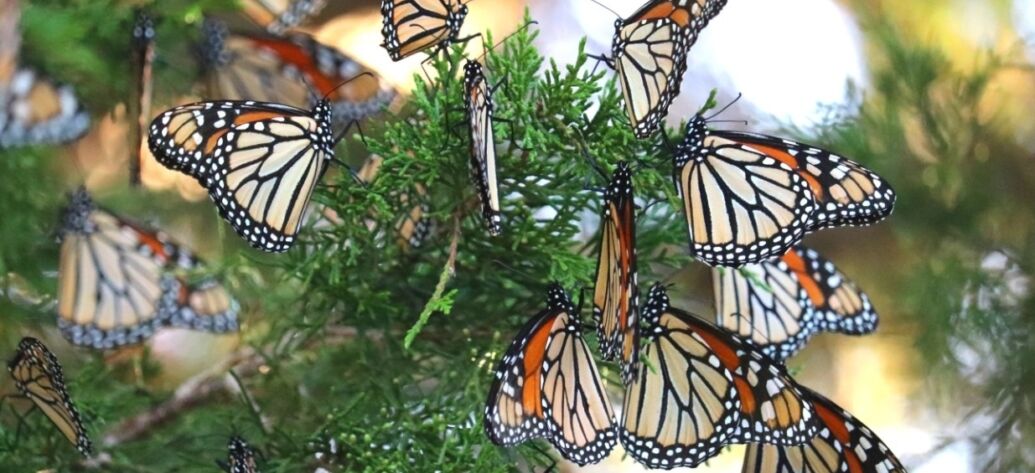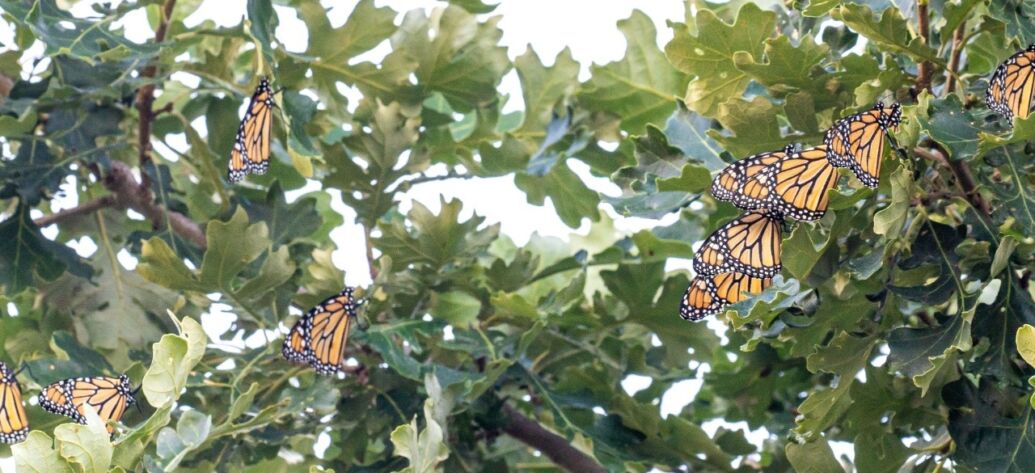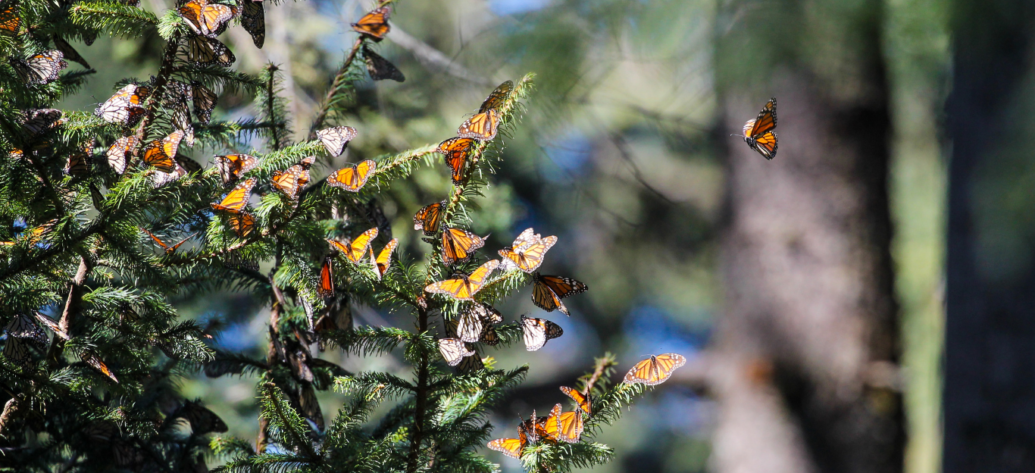Monarch Joint Venture Blog

Monarchs arrive at overwintering sites while late-season sightings continue in the north
Categories
- Population Trends
Monarchs have reached their overwintering sites right on schedule, even as a few late-season butterflies continue to appear across the northern U.S. Dr. Karen Oberhauser shares the latest migration observations, new tracking technology, and ways to support monarch conservation. Read More

Monarchs still on the move as calendar turns to November
Categories
- Population Trends
As we turn the calendar, monarch roosts are being reported in Texas and Mexico, with the leading edge of migration near Saltillo in the State of Coahuila. The first monarchs should be arriving to areas near overwintering sites soon. Read More

Strong end to monarch breeding season; leading edge of migration reaches Oklahoma
Categories
- Population Trends
Journey North volunteers have reported monarch roosts as far as Kansas and Oklahoma, and Dr. Karen Oberhauser writes that monarch observers with the Monarch Larva Monitoring Project reported monarchs in good numbers throughout August and into September. Read More

Breeding monarch numbers, conditions along migratory path bode well for fall migration
Categories
- Population Trends
Fall migration has begun, with the first roost reports coming in from places like North Dakota, Minnesota, Ontario, and Michigan. Strong numbers reported by community scientists and favorable conditions for traveling monarchs are welcome news for monarchs as they begin their travels south. Read More

Eastern Monarch Numbers Increase, But Conservation Efforts Still Critical
Categories
- Migration
- Population Trends
- Recent Research
- Monarchs in Mexico
The eastern monarch butterfly population in Mexico’s oyamel fir forests this past winter occupied 1.79 hectares, according to the latest survey released by the World Wildlife Fund-Telmex Telcel Foundation Alliance (WWF) and the National Commission of Protected Natural Areas in Mexico (CONANP). This represents a 99% increase from last year’s 0.9 hectares in the 2023-2024 overwintering season. Read More
News Categories
- Community Science
- Conservation Stories
- Migration
- MJV Partnership News
- Population Trends
- Recent Research
- More than Monarchs
- Monarch Conservation Spotlight
- Important Monarch News
- Habitat News
- Education News
- Monarchs in Mexico
- Department of Defense
- Department of Defense Case Studies
- Prairie Oaks
- Science and research
